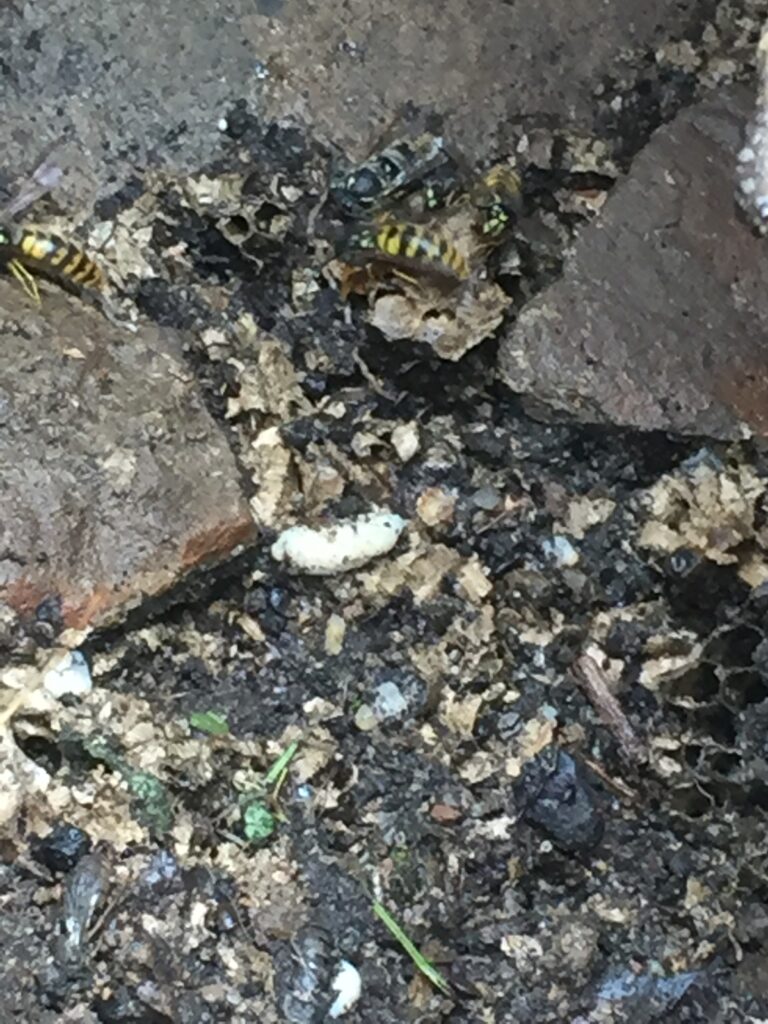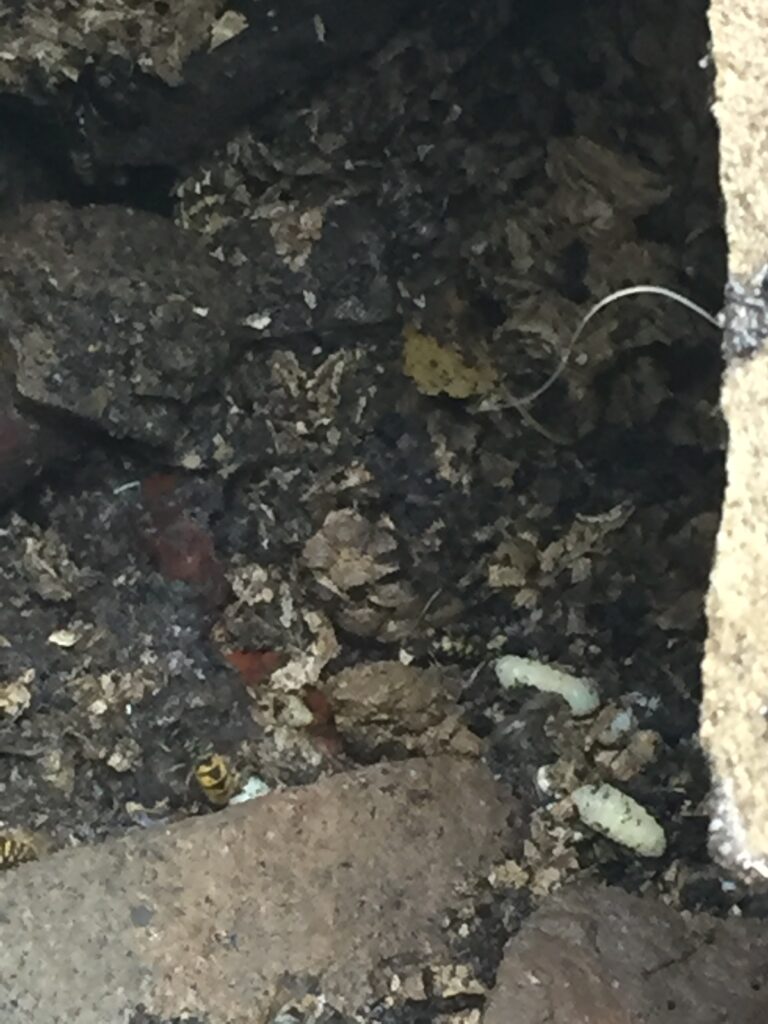Over the summer I have become aware of a wasp’s nest. The wasps would fly in and out of a hole in a stone wall, busy with their tasks. Knowing that wasps are pollinators, I left them to it, despite being cautious of walking passed the spot.
Talking to someone ‘in the know’, he explained that wasps build a nest over the spring and summer months. The larvae grow within it monitored by the queen, whilst the rest of the wasps fly in and out with food. At the end of summer, all the wasps, bar the queen, die. The queen then hibernates with the larvae, to emerge next Spring as a new colony. They abandon the old nest to reconstruct a new one elsewhere.
The other day I came upon the area to discover a massive hole where the wasps’ nest had been. A few bemused creatures were flying disconsolately in and out of the original hole, not sure what to make of the devastation.

And devastation it was! Bits of honeycomb-like structures were strewed around, littering the soil.

A few grubs that had been missed, lay in broken sections of nest, bewildered by their change of environment. (spot the grub just to the right of the left pointed stone)

Powerful paws had been at work here. Piles of soil steeped up against the wall, showed where the digger had thrown the layer of soil covering the nest.

The size and depth of the hole indicated it had been a creature capable of great strength and determination.

It also showed evidence of a creature that wasn’t bothered by wasp stings and had an appetite for the fat juicy white grubs found in the nest. Can you spot the two white grubs?

It had jaws that were big and strong enough to demolish a very well built structure.
Can you solve the mystery?
My theory is that it is a black and white creature, much maligned by farmers, loved by naturalists and persecuted by nasty men with viscously trained dogs. For obvious reasons I have to be careful about the location of this mystery.
One thing is obvious though. They are very valuable creatures for maintaining the balance of nature in the area. As perfect, natural helpers in the realm of pest control, they deserve to be left alone to fulfil their role in the ecosystem.
« Back to blog page